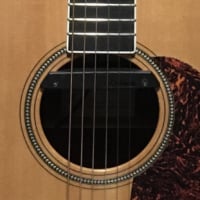Welcome! Here are the website rules, as well as some tips for using this forum.
Need to contact us? Visit https://heatinghelp.com/contact-us/.
Click here to Find a Contractor in your area.
If our community has helped you, please consider making a contribution to support this website. Thanks!
Good video on Vitodens 100 Install
Options

D107
Member Posts: 1,944
<a href="http://www.youtube.com/watch?v=1ghnx_i4jAg">http://www.youtube.com/watch?v=1ghnx_i4jAg</a>
It is refreshing to see a decent video like this from someone who, at least to my layman's eyes, appears to know what he is doing. Since it's obviously alot easier to put out something like this that's not showing the installation process itself, I would hope more installers would follow suit. Good way to introduce yourself to potential customers.
The best thing is he's not trying to show homeowners how to install it themselves or tune it up like some other videos we've seen.
Anyone here find any flies in the ointment?
It is refreshing to see a decent video like this from someone who, at least to my layman's eyes, appears to know what he is doing. Since it's obviously alot easier to put out something like this that's not showing the installation process itself, I would hope more installers would follow suit. Good way to introduce yourself to potential customers.
The best thing is he's not trying to show homeowners how to install it themselves or tune it up like some other videos we've seen.
Anyone here find any flies in the ointment?
0
Comments
-
If it was me doing it....
I'd have selected the version of the boiler with a built-in pump and probably piped it differently. (Maybe so-called 'System' boilers are not sold in US?)
I sort-of understand the principle of close-spaced Ts and letting the water circulate through the 'demands' by pressure-differential. But in most UK applications, there's no real need to create the loop as shown. For the situation with 2 fan-coil units and a UFH manifold, I'd probably have connected them all in parallel across the Supply and Return, if necessary with flow-regulating valves on each Supply pipe. I'm struggling to understand, in fact, what technical advantages derive from the close-spaced T arrangement.
The requirement for a low-water shut-off on a Viessmann setup is a bit of a joke! The thing is thickly coated with safety devices and sensors. For astart, to protect the plastic flue, there's a non-resetting sensor that cuts of the burner at around 195F, a pressure-switch to prevent dry-firing in the first place, an overheat check in the software that will stop it if the Supply temperature (inside the boiler) goes more than x% above setpoint. Looks like the local codes have some catching-up to do with current boiler technology.
And neutralising the condensate water has always struck me as a bit of a waste of time. It's going to be less than 5 litres per hour, tops. The pH is only 5 or 6. By the time you've added it to a much larger waste flow from other sources, what's it going to affect? I reckon nothing, at all, anywhere, ever. And anyway - a 'neutralizer' will DEFINITELY need to be renewed annuallly (or even more frequently). Yeah - right!0
This discussion has been closed.
Categories
- All Categories
- 87.3K THE MAIN WALL
- 3.2K A-C, Heat Pumps & Refrigeration
- 61 Biomass
- 429 Carbon Monoxide Awareness
- 120 Chimneys & Flues
- 2.1K Domestic Hot Water
- 5.8K Gas Heating
- 115 Geothermal
- 166 Indoor-Air Quality
- 3.7K Oil Heating
- 77 Pipe Deterioration
- 1K Plumbing
- 6.5K Radiant Heating
- 395 Solar
- 15.7K Strictly Steam
- 3.4K Thermostats and Controls
- 56 Water Quality
- 51 Industry Classes
- 50 Job Opportunities
- 18 Recall Announcements